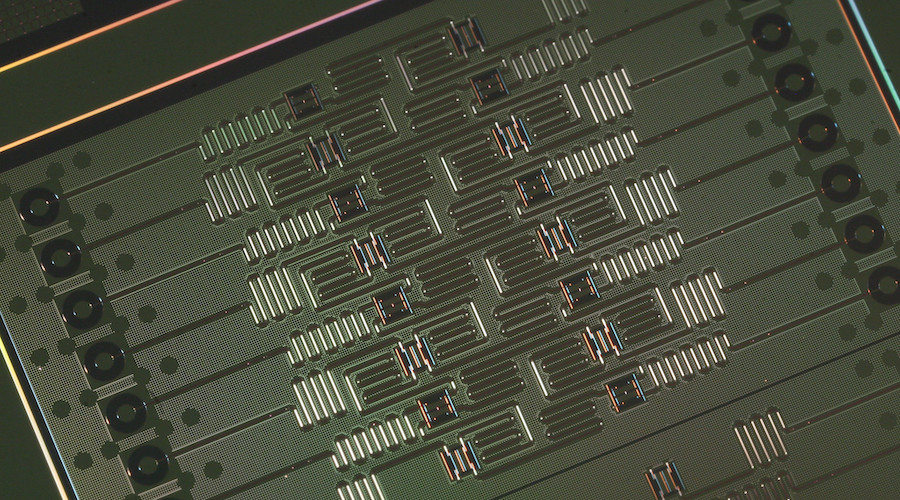Disorganizing rare-earth ions may improve quantum information storage

A new paper in Nature Physics shows that by cramming lots of rare-earth ions into a crystal, some will form pairs that act as highly coherent qubits, thus debunking the idea that solid-state qubits need to be super dilute in an ultra-clean material to achieve long lifetimes.
According to the study’s authors, one of the major barriers to practical quantum computing has been how to make qubits that retain their quantum information long enough to be useful.
It’s widely accepted that the key to qubits with long lifetimes, or ‘coherences’, is cleanliness. Qubits lose quantum information through a process known as decoherence when they start to interact with their environment.
So, the conventional wisdom goes, keep them away from each other and from other disturbing influences, and they’ll hopefully survive a little longer.
However, such a ‘minimalistic’ approach to qubit design is problematic in practice. Finding suitable ultra-pure materials is not easy. Furthermore, diluting qubits to the extreme makes scale-up of any resulting technology challenging.
The new research conducted at the Paul Scherrer Institute PSI, ETH Zurich, and EPFL shows how qubits with long lifetimes can exist in a cluttered environment.
“In the long run, how to make it onto a chip is a question that’s universally discussed for all types of qubits. Instead of diluting more and more, we’ve demonstrated a new pathway by which we can squeeze qubits closer together,” Gabriel Aeppli, senior author of the study, said in a media statement.
Rare-earth ions + qubit gems
Aeppli and his colleagues created solid-state qubits from terbium doped into crystals of yttrium lithium fluoride. They showed that within a crystal jam-packed with rare-earth ions were qubit gems with much longer coherences than expected in such a dense system.
“For a given density of qubits, we show that it’s a much more effective strategy to throw in the rare-earth ions and pick the gems from the junk rather than trying to separate the individual ions from each other by dilution,” Markus Müller, co-author of the study, said.
Like classical bits that use 0 or 1 to store and process information, qubits also use systems that can exist in two states, albeit with the possibility of superpositions. When qubits are created from rare-earth ions, typically, a property of the individual ions—such as the nuclear spin, which can point up or down—is used as this two-state system.
Pairing up offers protection
The team could succeed with a radically different approach because, rather than being formed from single ions, their qubits are formed from strongly interacting pairs of ions. Instead of using the nuclear spin of single ions, the pairs form qubits based on superpositions of different electron shell states.
Within the crystal matrix, only a few of the terbium ions form pairs.
“If you throw a lot of terbium into the crystal, by chance, there are pairs of ions—our qubits. These are relatively rare, so the qubits themselves are quite dilute,” Adrian Beckert, lead author of the study, said.
So why aren’t these qubits disturbed by their messy environment? It turns out that these gems, by their physical properties, are shielded from the junk. Because they have a different characteristic energy at which they operate, they cannot exchange energy with the single terbium ions—in essence, they are blind to them.
“If you make an excitation on a single terbium, it can easily hop over to another terbium, causing decoherence,” Müller said. “However, if the excitation is on a terbium pair, its state is entangled, so it lives at a different energy and cannot hop over to the single terbium. I’d have to find another pair, but it can’t because the next one is a long distance away.”
The researchers stumbled upon the phenomenon of qubit pairs when probing terbium-doped yttrium lithium fluoride with microwave spectroscopy. The team also uses light to manipulate and measure quantum effects in materials, and the same kind of qubits are expected to operate at the higher frequencies of optical laser light. This is of interest as rare-earth metals possess optical transitions, which give an easy way in with light.
“Eventually, our goal is to also use light from the X-ray Free Electron Laser SwissFEL or Swiss Light Source SLS to witness quantum information processing,” says Aeppli. This approach could be used to read out entire qubit ensembles with X-ray light.
In the meantime, terbium is an attractive choice of dopant: it can be easily excited by frequencies in the microwave range used for telecommunications.
{{ commodity.name }}
{{ post.title }}
{{ post.date }}

Comments